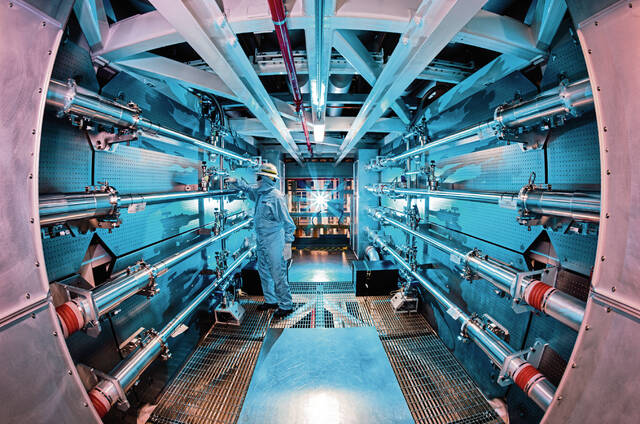Carolyn Kuranz: Why fusion ignition is being hailed as major breakthrough in fusion
American scientists have announced what they have called a major breakthrough in a long-elusive goal of creating energy from nuclear fusion.
The U.S. Department of Energy said Dec. 13 that for the first time — and after several decades of trying — scientists have managed to get more energy out of the process than they had to put in.
Fusion is a nuclear reaction that combines two atoms to create one or more new atoms with slightly less total mass. The difference in mass is released as energy. Since the speed of light is enormous, converting just a tiny amount of mass into energy — like what happens in fusion — produces a similarly enormous amount of energy.
Researchers at the U.S. Government’s National Ignition Facility (NIF) in California have demonstrated, for the first time, what is known as “fusion ignition.” Ignition is when a fusion reaction produces more energy than is being put into the reaction from an outside source and becomes self-sustaining.
The technique used at the NIF involved shooting 192 lasers at a 0.04-inch pellet of fuel made of deuterium and tritium — two versions of the element hydrogen with extra neutrons — placed in a gold canister. When the lasers hit the canister, they produce X-rays that heat and compress the fuel pellet to about 20 times the density of lead and to more than 5 million degrees Fahrenheit — about 100 times hotter than the surface of the sun. If you can maintain these conditions for a long enough time, the fuel will fuse and release energy.
To assess the success of a fusion experiment, physicists look at the ratio between the energy released from the process of fusion and the amount of energy within the lasers. This ratio is called gain. Anything above a gain of 1 means that the fusion process released more energy than the lasers delivered.
On Dec. 5, the NIF shot a pellet of fuel with 2 million joules of laser energy — about the amount of power it takes to run a hair dryer for 15 minutes — all contained within a few billionths of a second. This triggered a fusion reaction that released 3 million joules. That is a gain of about 1.5, smashing the previous record of a gain of 0.71.
Fusion energy has been the “holy grail” of energy production for nearly half a century. While a gain of 1.5 is a truly historic scientific breakthrough, there is still a long way to go before fusion is a viable energy source.
There are a number of pieces of the fusion puzzle that scientists have been steadily improving for decades to produce this result, and further work can make this process more efficient.
Fusion conditions are very challenging to sustain, and any small imperfection in the capsule or fuel can increase the energy requirement and decrease efficiency. Scientists have made a lot of progress to more efficiently transfer energy from the laser to the canister and the X-ray radiation from the canister to the fuel capsule, but currently only about 10% to 30% of the total laser energy is transferred to the canister and to the fuel.
Finally, while one part of the fuel, deuterium, is naturally abundant in sea water, tritium is much rarer. Fusion itself actually produces tritium, so researchers are hoping to develop ways of harvesting this tritium directly. In the meantime, there are other methods available to produce it.
These and other scientific, technological and engineering hurdles will need to be overcome before fusion will produce electricity for your home. Work will also need to be done to bring the cost of a fusion power plant well down from the $3.5 billion of the NIF. These steps will require significant investment from both the federal government and private industry.
Remove the ads from your TribLIVE reading experience but still support the journalists who create the content with TribLIVE Ad-Free.

